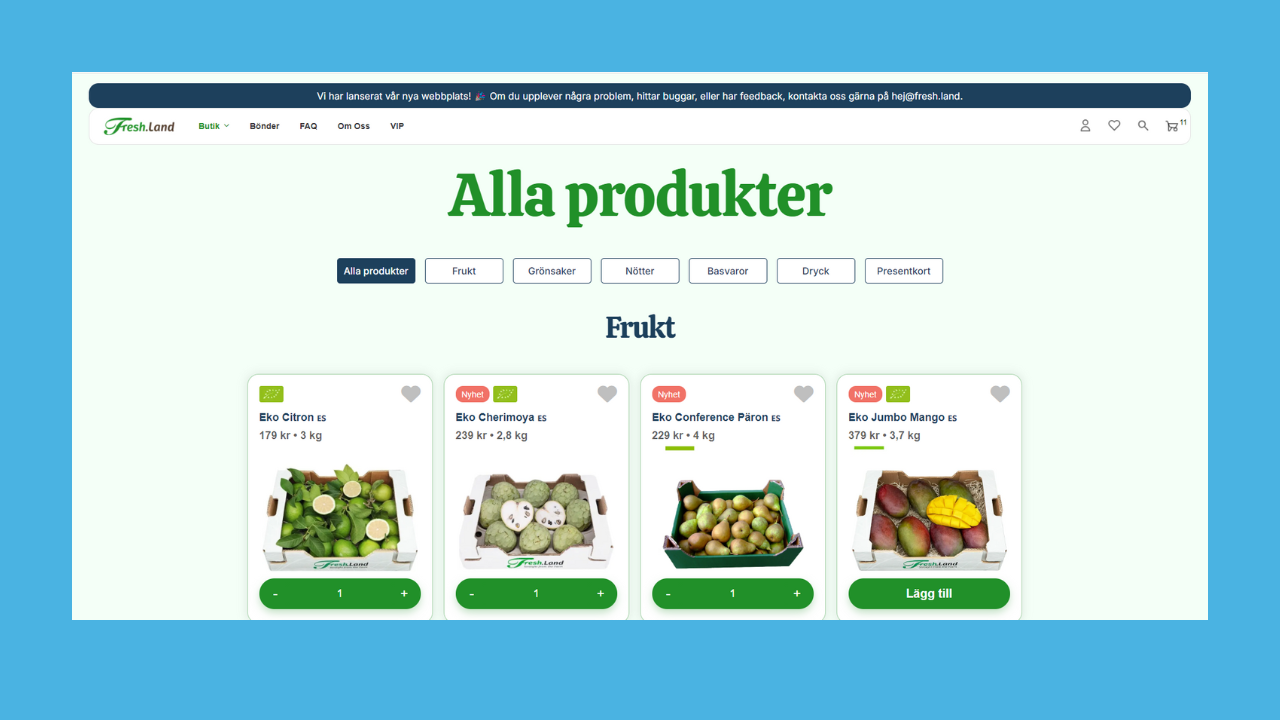

Freshland for Sweden is a headless eCommerce solution developed by decoupling the frontend from WordPress and WooCommerce to create a more optimized, fast, and SEO-friendly platform. By transitioning the traditional WordPress site into a Next.js-based frontend with server-side rendering (SSR), the platform now offers improved performance and reliability, creating a seamless experience for users shopping for farm-to-table produce.
The Freshland website, previously a WordPress and WooCommerce-based solution, was converted into a headless architecture. The frontend was rebuilt using Next.js with server-side rendering, ensuring faster load times, improved optimization, and a more reliable user experience.
All necessary WordPress and WooCommerce plugins were converted into headless architecture by developing RESTful APIs for each. This allowed the decoupled frontend to interact seamlessly with the backend while maintaining optimized performance.
To enhance speed and efficiency, object caching, full-page caching, and database caching were implemented. This significantly reduced server load times, ensuring that users could quickly access content, even with large data requests or complex product catalogs.
By using Next.js with server-side rendering (SSR), the platform achieved improved SEO performance, allowing the website to rank higher in search engines. The platform’s architecture now ensures that pages are quickly rendered and optimized for search crawlers.
The frontend was deployed on Vercel, a platform known for its optimized deployment of Next.js applications. Vercel’s features enabled faster performance and efficient scalability, ensuring the eCommerce platform runs smoothly and handles high user traffic.
The Freshland for Sweden website has successfully transitioned to a headless architecture, providing users with a fast, reliable, and SEO-friendly eCommerce experience. The use of Next.js, combined with powerful caching techniques and RESTful API integration, has significantly improved the platform’s speed and user engagement. This conversion allows Freshland to maintain a competitive edge in the farm-to-table eCommerce market.